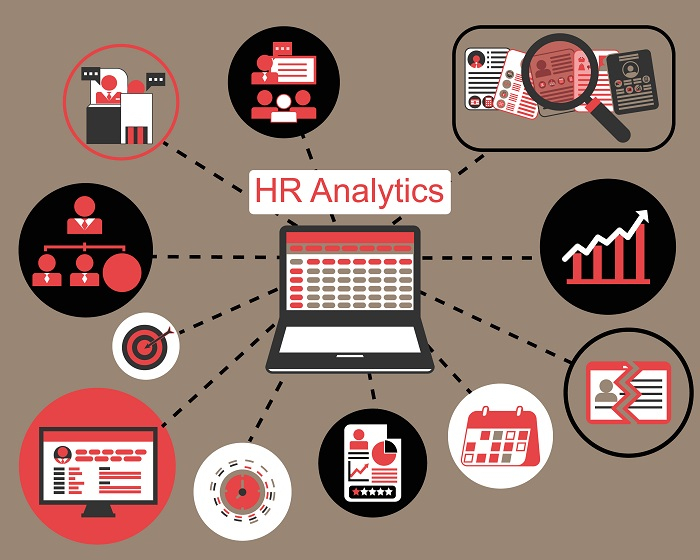
 Data Structure
Data Structure Networking
Networking RDBMS
RDBMS Operating System
Operating System Java
Java MS Excel
MS Excel iOS
iOS HTML
HTML CSS
CSS Android
Android Python
Python C Programming
C Programming C++
C++ C#
C# MongoDB
MongoDB MySQL
MySQL Javascript
Javascript PHP
PHP
- Selected Reading
- UPSC IAS Exams Notes
- Developer's Best Practices
- Questions and Answers
- Effective Resume Writing
- HR Interview Questions
- Computer Glossary
- Who is Who
Various Human Resources Analytics Formulas That Can Help You Deck Up
Gone are the days when the only work of the Human Resources department was to organize the Rangoli-making competitions or reply to the employees' emails with "we will get back to you." In the dynamic world, we live in people are only talking about data. Big data is the future and present. If you can present it in a pivot table along with the analysis of the past few years, then it is only worth consideration. With artificial intelligence and the technological boom, the way that organizations work has also changed. The Human Resources department today has become an integral part of the workings of the company because of vast resignations, work-from-home models, absenteeism, and companies hiring from across the globe. Attracting the right talent is just as important as keeping them on board for years. In this article, we will be discussing how the human resources department can present its analysis in terms of percentages and numbers and what the advantages of doing so are.
The Concept of HR Analytics and its Importance

HR Analytics is presenting all the HR-related data in numbers or percentage terms, like absenteeism, productivity, turnover, and cost per hire. Earlier, we used to say that these many employees have left the organization, and it is good or bad for the company, but now the trend is to talk in numbers and to show how the bottom line and top line are getting affected because of the HR practices. Compensation is a major factor in why an employee leaves the organization, but today, in surveys, we see that good work culture and flexible working hours are also major concerns for employees.
HR Analytics Will Offer Companies the Following Advantages
It will help the company understand the reasons for absenteeism and turnover in concrete terms.
It will help the company understand the performance of the industry and how it is performing in comparison to that.
It will help the company determine the difference between the top and bottom lines because of HR-related initiatives.
It will help the company attract and retain the best talent.
HR Analytics Formulas
Interviews per hire = The total number of employees interviewed for the position before the company makes a decision on the hire.
It is favorable to have fewer interviews per hire. This shows the efficiency of the recruitment team in screening relevant CVs and also saves a lot of business time compared to conducting irrelevant interviews. To ensure this, recruiters can ensure that they have crystal-clear job descriptions and have understood the requirements and the basic criteria.

Cost Per Hire = (Total internal cost incurred for hiring + Total external cost incurred for hiring) / Total number of hires
The internal recruitment cost will include the cost of the recruiter, the hiring manager, the interview panel, the bonuses, and the infrastructure cost, and the external recruitment cost will include the agency fees, advertisement costs, and others. It is preferable to have a low per-hire cost. This again shows the efficiency of the recruitment team and their understanding of the job description and its requirement.
Employee turnover ratio or the Attrition rate = (Total number of employees who voluntarily and involuntarily left the organization / Average number of employees in the organization during that time period) * 100
A lower employee turnover ratio is preferred by the companies. Companies should aim for an employee turnover ratio lower than the industry standard. For example, the employee turnover percentage of the information technology industry will be 20.3% in 2022.
Revenue per employee = Total revenue for the year / The average number of employees in the organization during that year.
This is just like the per capita income of a country. The revenue generated by each employee on average
Absentee rate = (Total number of employees who took unscheduled days off / Total number of employees in the organization during that time period.)
An employee is not going to take a large number of days off when they feel connected to their work and their organization. Unplanned leaves or fake sick leaves only come in cases when the employee is frustrated with the work and organization. This rate will help us understand the working culture of an organization.
Employee return = (Total revenue earned by the company during a specific time period / Total number of employees in the organization during that time period) / (Total employee cost incurred by the company during that time period / Total number of employees in the organization during that time period)
This helps us understand the productivity of an employee and their contribution to the organization as compared to the cost incurred by the employee. It is recommended to compare the employee return for the same industry and a like-sized company.

Annual in-hand salary as a percentage of total compensation = Annual in-hand salary / total employee compensation (in-hand salary + benefits + taxes + provident fund + gratuity + reimbursements and others)
This could be the most important parameter for an employee when he joins the company. A company can offer him a package of 10 lakhs, but at the end of the day, after the deductions, he might get a minimal amount in hand, and that could be a reason for him to change jobs with the same package. If you, as a company, have minimal deductions, it is beneficial for you to boast this to your employees and on the company website.
Employee goal percentage met or exceeded = (Total number of employee goals met or exceeded during the year / total number of employee goals set during the year) * 100
This ratio will help a company understand the productivity of its employees. Companies can even divide it into different functional departments to analyze each department separately.
Training and development hours = Total training and development hours / The average number of employees during that time period.
This rate is going to help us understand the training and development initiative taken by a company for its employees. It is always beneficial to upscale and upgrades your employees rather than going for external hiring, as this will ensure that employees are mentally challenged and that their personal development needs are also fulfilled.
Turnover cost = Total cost of separation + replacement training + vacancy.
The cost that a firm incurs when an employee leaves the organization is higher and sometimes causes a burn in the firm's pocket. Marketers have understood that it is easier and more profitable to retain consumers than to attract new ones; it is time that companies also understand the same.
With the above formulas, it is now easy for human resource practitioners to express what they feel in terms of data and percentages. These small initiatives have a long way to go in the development of the organization. Today is not a buyer's or seller's market, but a market that is able to hold its employees and its customers. With the abovementioned simple HR analytics, we can make a difference in terms of presentation and the weight of the department. It is time to be visible with data and facts.

